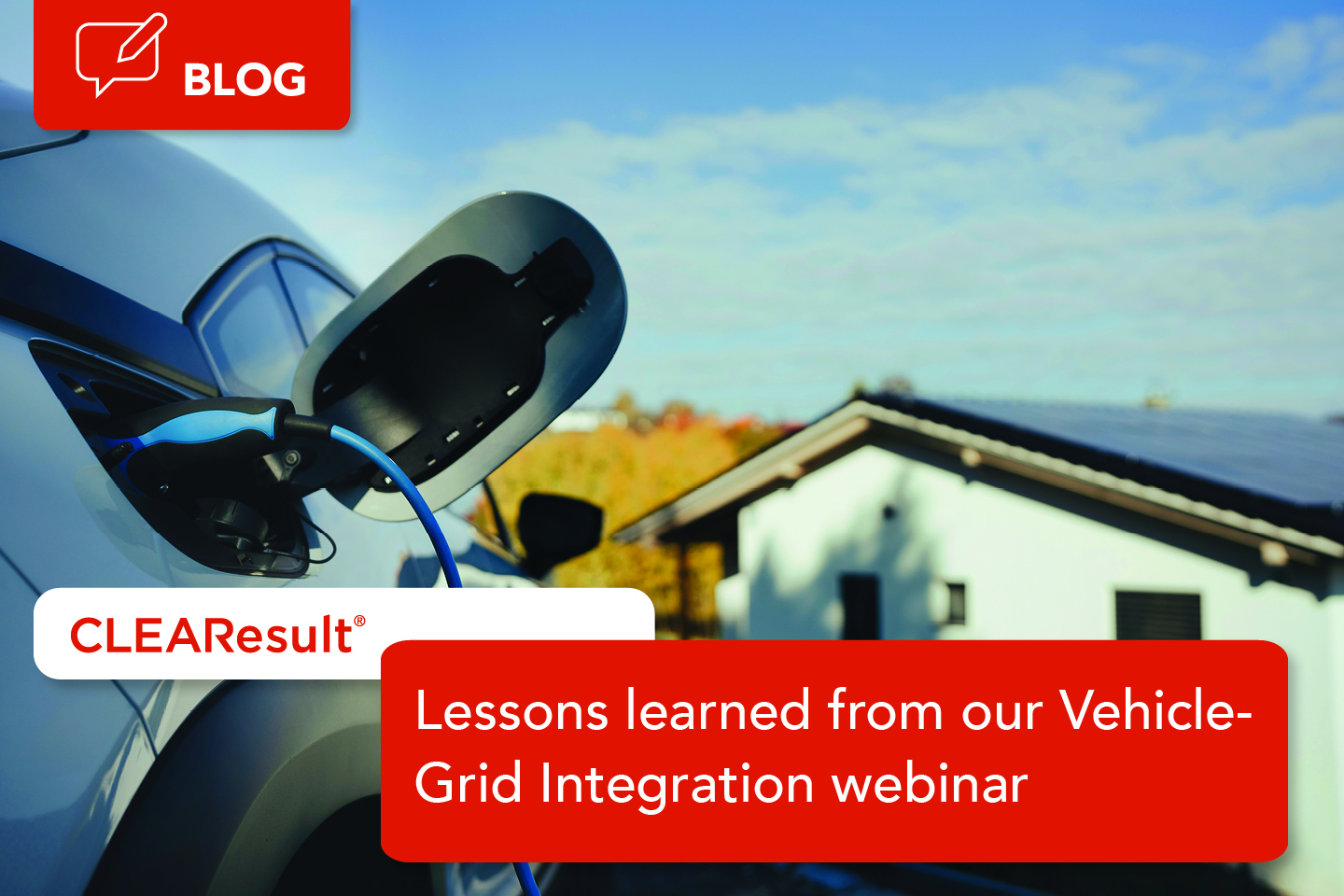Lessons learned from our Vehicle-Grid Integration webinar

Last month, we hosted our first webinar of the year, focusing on Vehicle-Grid Integration (VGI), we thought this was an ideal moment to talk about how as electric vehicle (EV) adoption grows, along with building electrification and federal backing, utilities must adapt grid operations to support more vehicle charging. This adaptation can include managed charging programs, enabling bidirectional charging, and building up the relationship between utility and customer.
James Russell, our Director of Transportation Electrification, joined forces with Amy Findlay from Eversource, Andrea Nuesser of Hydro One, and Garrett Fitzgerald of the Smart Electric Power Alliance (SEPA) to share their thoughts on these opportunities. They shared experiences from active pilot programs, offering insights into the anticipated results of introducing or expanding managed charging services and the success of different EV charging incentives. The discussion also covered effective customer engagement strategies and how managing grid impact more efficiently can lead to more cost-effective electricity infrastructure.
Improving energy affordability and sustainability through VGI programs hinges on customer engagement
Growing adoption of EVs and evolving building infrastructure are driving increasing demands on the power grid. VGI is designed to meet these growing demands but success hinges on customer involvement in utility-run programs. Educating and engaging customers allows utilities to not only manage the load but also establish trust and offer incentives for customers to change their charging habits. A customer is essentially granting their utility provider access to their charging behavior but getting to that point requires open communication, attractive incentives, and an established relationship with the utility.
A variety of VGI programs are accessible to utilities. However, the focus must always be on the customer—choosing the right program for a utility's customer base and managing it efficiently for the mutual benefit of consumers and utilities. James Russell elaborates on how utilities can look to engaging with their customers to better serve their energy affordability needs through impactful environmentally conscious efforts.
VGI encompasses a spectrum of active charging programs that receive telematics data to optimize grid operations
As utilities carve out their managed charging initiatives, grasping the operational dynamics of an active charging program is crucial. Is the program a facet of their demand response strategy? Does it actively monitor an EV’s power requirements as part of an ongoing management charge program? SEPA's Garrett Fitzgerald elucidates the primary forms of active charging programs utilities might deploy:
- Event-Based Charging: Occasions arise when utilities or aggregators might signal customers to halt charging during peak demand hours.
- Continuous Management: Here, utilities perpetually oversee the charging demands of EVs, scheduling charge times that are most advantageous for both the utility’s operational efficiency and the customer's needs.
Opening a dialogue with customers is vital for utilities to help them comprehend the advantages of sharing vehicle telematics. Only with this understanding can utilities enhance program intricacy and delve into the realm of bidirectional charging. When vehicles compatible with bidirectional charging join a program, utilities gain the capability to dictate not only how but when these vehicles supply power back to buildings or the grid. Achieving this level of interaction is a gradual process, fundamentally reliant on customers’ willingness to permit utilities to take an active role in managing their charging requirements.
Eversource used telematics and rebranded to elevate their managed charging program
When Eversource first stepped into managed charging, it capitalized on its established demand response initiative. The early stages saw the program interface with EVs via their charging units, affording Eversource the ability to temper charging activity during periods of peak demand. Over time, Eversource integrated vehicle telematics to establish a direct link to EVs, effectively sidestepping the chargers. This advancement enabled refined management capabilities and increased incentives for participants.
Currently, the program collaborates with four charging station brands and accommodates 24 EV models. Amy Findlay pointed out Eversource's strategy to simplify and rebrand their offerings, making the programs more user-friendly and effectively communicating the benefits of joining. This rebranding, coupled with a streamlined enrollment process, set Eversource on course to successfully manage a customer base of over 4,400. These customers are now more aware of their charging patterns, with a significant number adopting a scheduled charging regimen, which has led to 78% of them meeting their targeted charging goals.
Customer program engagement and positive program feedback has steadily increased for two top utility providers
Engagement and satisfaction are pivotal measures of success for managed charging programs. At Eversource and Hydro One, program feedback and engagement levels have not just met but surpassed projected milestones.
Amy Findlay emphasizes that Eversource's success is largely due to its frictionless enrollment process, now considered a cornerstone of their customer service strategy. Similarly, Hydro One is witnessing a surge in positive engagement, as Andrea Nuesser reports. Although their program is in its nascent phase, the initial group of participants has shown enthusiasm for contributing to demand response initiatives and adjusting their charging habits when prompted, motivated by the shared goal of responsible energy consumption.
View the full Vehicle-Grid Integration webinar on YouTube and visit our transportation electrification page to learn more about the solutions we offer.